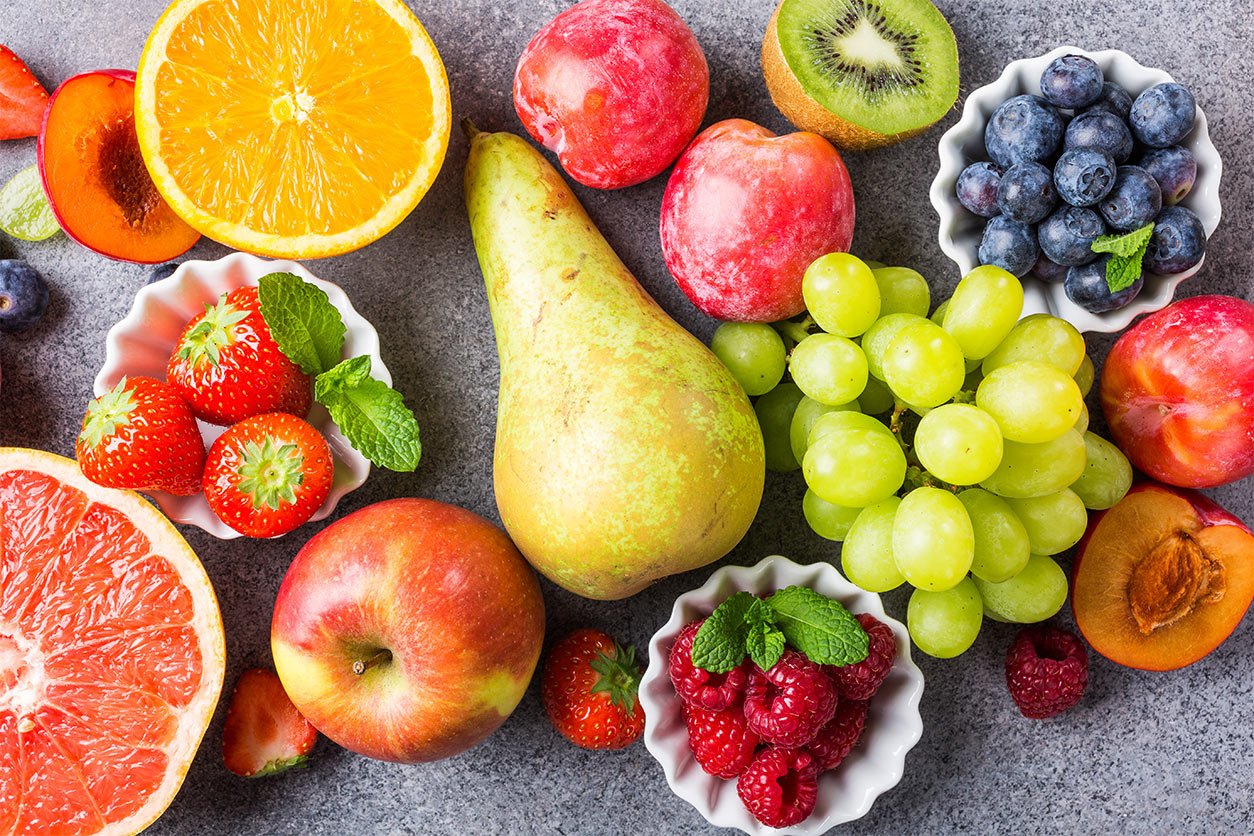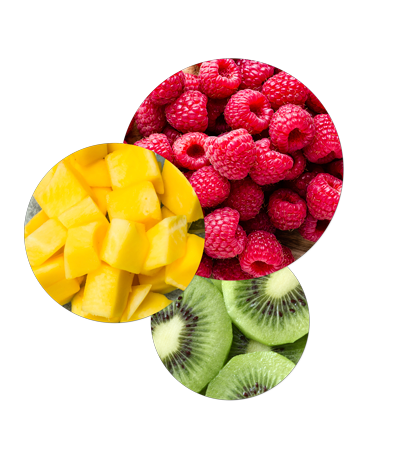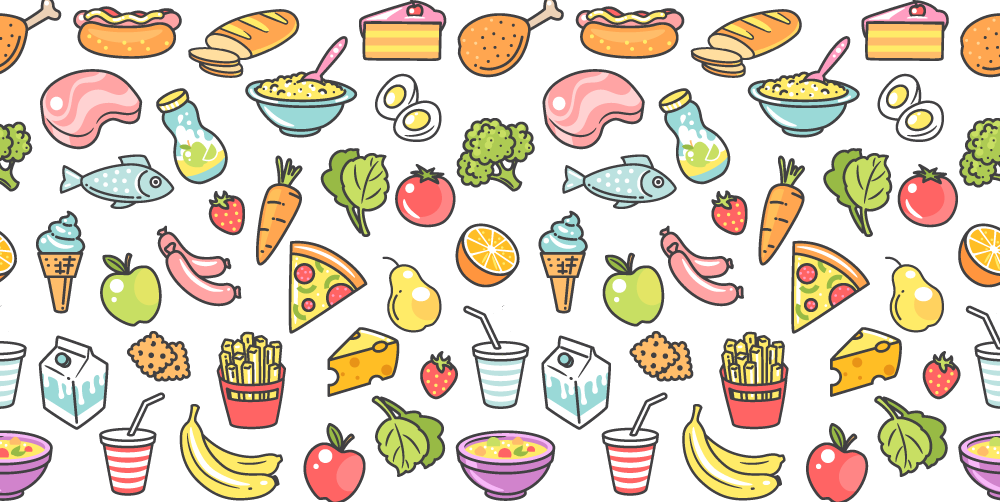How to Include Fruit in a Diabetes Meal Plan
Reviewed by: Melissa Herrmann Dierks , RDN, LDN, CDCES
For people with diabetes, fruit is a nutritious substitute for processed foods and can help satisfy sweet cravings — but how does it affect blood sugar? Read on for an in-depth look at what to consider when incorporating fruit into a balanced diabetes diet.
- How fruit affects blood sugar
- Healthy ways to incorporate fruit into a diabetes meal plan
- 8 Tips to increase fruit intake
How Fruit Affects Blood Sugar
It is a common misconception that, since it contains sugar, fruit is not ideal for people with diabetes. Fruit also contains carbohydrate, which can have the biggest impact on blood glucose levels throughout the day.
However, fruit can be a healthy part of a diabetes meal plan. Fruit is a high-fiber food, which means it takes our bodies longer to digest. The slower digestion process causes blood sugar levels to rise gradually instead of spiking, making high-fiber fruits more filling than low-fiber foods.
Fruit contains natural sugar, so it is a better option than foods made with artificial or added sugars. It’s also a great source of vitamins, minerals, and fiber. Many fruits have a low glycemic index (GI), which is a ranking of carbohydrate according to the extent to which it raises blood glucose levels after eating. Foods with a low GI can have a lower effect on blood glucose. As long as you stick to a diabetes meal plan and pay attention to your carbohydrate intake throughout the day, fruit can be a healthy, satisfying part of any meal.
Healthy Ways to Incorporate Fruit Into a Diabetes Meal Plan
From the type of fruit to the serving size, here’s a look at healthy ways to add fruit to your diet.
The Best Fruits for People with Diabetes
All types of fruit, from apples to watermelon, can be healthy and delicious options. According to the American Diabetes Association (ADA), fresh, frozen, and canned fruits without added sugars are the best fruits for people with diabetes. Here is a quick list of common fruits included on the ADA website:
|
|
When looking at canned fruit, look for labels that say, “packed in its own juices,” “unsweetened,” or “no added sugar.” You can also incorporate dried fruit and 100% fruit juices, but keep in mind that the portion size will be smaller for the same carbohydrate content than for canned or fresh fruit.
The Worst Fruits for People with Diabetes
There are no fruits that should be avoided by people with diabetes, but carbohydrate counting and portion size are important factors when adding fruit to a meal plan.
One area to be cautious is with fruit juices and smoothies. When these are prepared, much of the dietary fiber is either removed or significantly broken down. This makes it easy to consume large quantities in a short amount of time, which can mean extra calories and carbohydrate. Because of the lack of fiber, fruit juices and smoothies may affect blood sugar faster than whole fruit options. This doesn’t mean that you can’t enjoy these beverages; just make sure to check portion sizes and total carbohydrate to factor these into your meal plan.
How Much Fruit to Eat
When adding more fruit into your diet, it is important to pay close attention to serving sizes because there will be differences in the amount of carbohydrate. For example, according to the ADA, the following fruit serving options contain about 15 grams of carbohydrate:
- A small piece of whole fruit
- ½ cup of frozen or canned fruit
- ⅓ to ½ cup of fruit juice
- 2 tablespoons of dried fruit, like raisins or cherries
Diabetes UK notes that one large banana contains 30 grams of carbohydrate and counts for one and a half portions of fruit. This may seem high, but keep in mind that a banana is better for you than a 2-inch slice of frosted cake, which also has 30 grams of carbohydrate, because the banana contains essential vitamins, minerals, and fiber.
The ADA recommends counting the carbohydrate from the fruit in your meal along with starches and dairy. This will help you stay close to your carbohydrate target for each meal. If you follow the plate method to help balance your eating pattern, you can include a small piece of whole fruit or ½ cup of fruit salad for dessert.
8 Tips to Increase Fruit Intake
People with diabetes can enjoy fruit throughout the day by following a meal plan and staying mindful of carbohydrate intake. Here are a few additional tips:
- Include one serving of fruit with each meal.
- Choose a variety of fresh, dried, frozen, and canned fruit options.
- Keep shelf-stable fruit cups at home or at work for a quick, easy, and healthy snack. Shop for sales on shelf-stable fruit options and stock up.
- Add fruit to main dishes when possible. Toss blueberries into your oatmeal or top a salad with dried cherries, strawberries, or mandarin oranges. You can also try baked fish with a salsa made from crushed pineapple, red pepper flakes, and chopped green onion.
- Carry a piece of fresh fruit with you for a snack on the go. A small apple or pear can easily fit into a purse or backpack.
- Make sure to look at the ever-growing options of frozen fruit brands in the freezer section at the supermarket. Frozen fruits won’t spoil easily and can be used in many ways.
- Choose canned fruit that is packed in its own juice or water, or drain the syrup when you’re ready to eat.
- Always read the label to check the portion size and carbohydrate content of packaged fruit to determine how to include the fruit’s carbohydrate count into your diabetes meal plan.
Fruit can play an integral role in a balanced diabetes diet. Compared to processed treats with added and artificial sugars, fruit provides a satisfying sweetness that can be more nutritionally beneficial. If you have questions about incorporating fruit into your diet, contact your healthcare team or speak with a Registered Dietitian Nutritionist.




